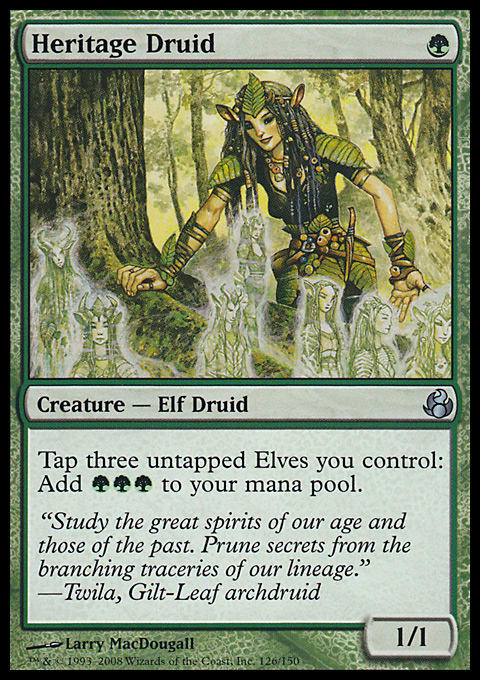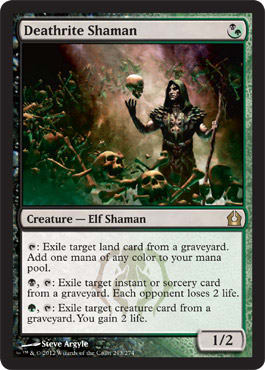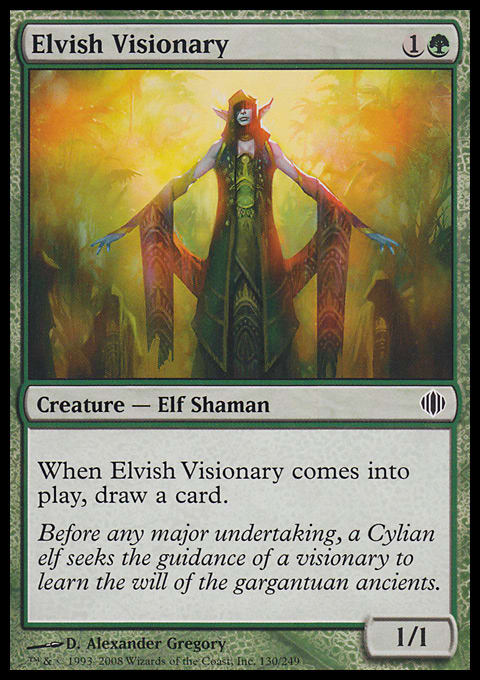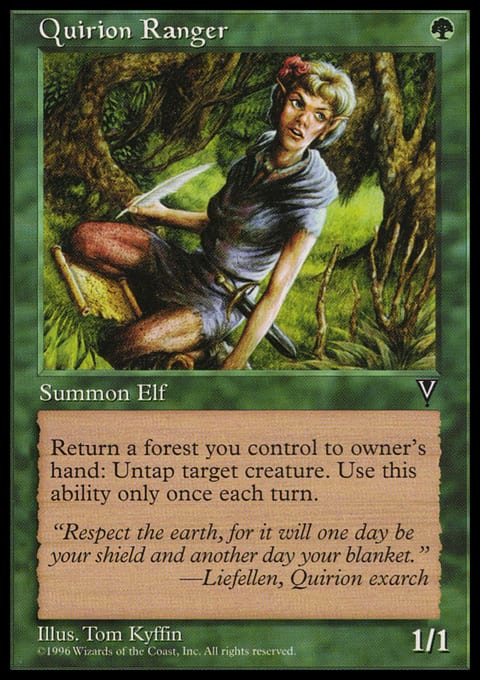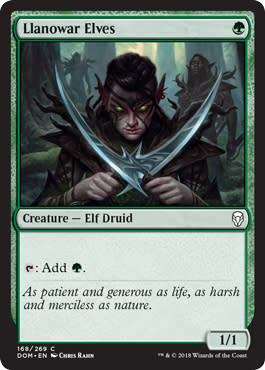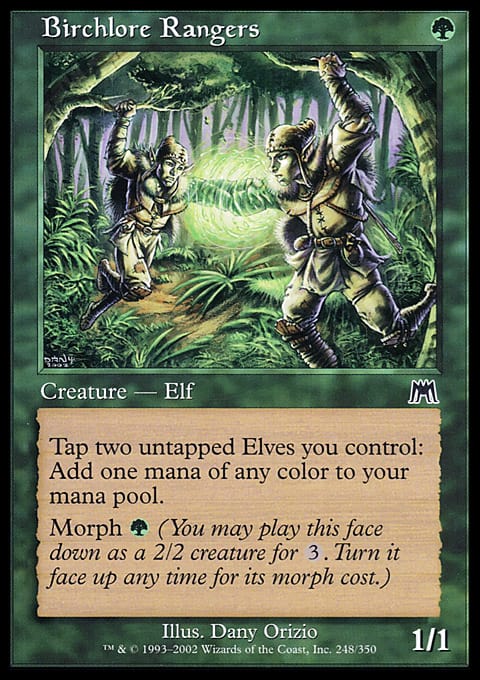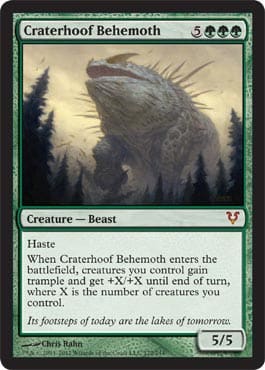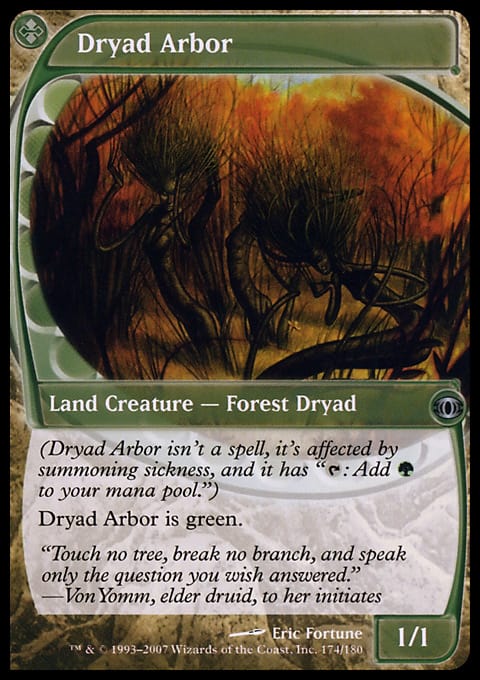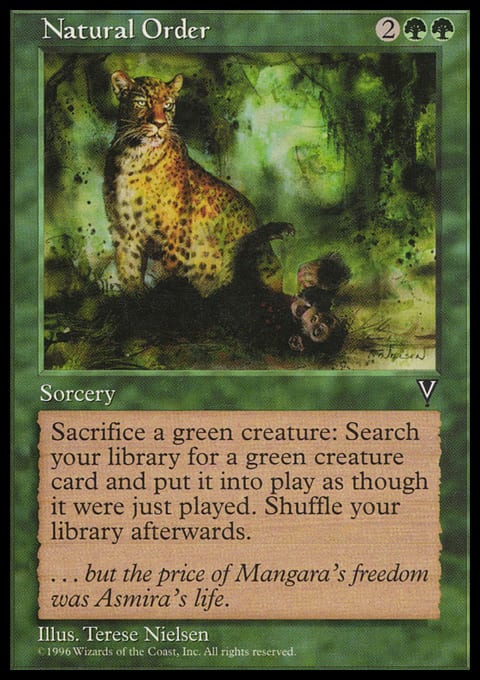For a while, I was worried I was going to end up like Jim Davis. For those unfamiliar, Jim is an acquaintance of mine, who in the distant past was well known for his ability to pilot Goblins in Legacy. But as other decks gradually improved over time, Goblins continued to lose ground in the format. Even after the deck had long fallen from relevancy, Jim persisted and continued playing the deck, hoping his experience with the archetype would be enough to compensate for his deck’s deficiencies. But It wasn't. At this point in the time, Goblins has been relegated to the bottom tier of the format. Jim’s proficiency with the deck is essentially useless, and all the hours he spent mastering the deck are wasted.
We don't mock though, at least not too much, for this could have easily been me. Before the banning of Sensei's Divining Top, my tribal deck of choice, Elves, seemed to be on its way out the door along with Goblins. And it's for this very reason that I've never penned any strategy related content to the deck despite it being my favorite deck to play in all of Magic. My goal in creating content is to provide valuable advice to those interested in improving their win rate. Writing an article that influences others to pick up Elves would have been the antithesis of this. But for several obvious reasons, and a few subtle reasons, the ban on Top should drastically improve the deck's position in the format. So with that being said, I think Elves is finally well positioned enough for me to produce my long overdue guide for it.
Philosophy
Due to the innate versatility of the archetype, there's a large array of opinions out there on how the deck should be piloted and constructed. Elves has the ability to combo, out attrition, and even occasionally beat down opponents. I've always advocated that Elves is a combo deck above all else, and my lists have always reflected this as well. The reason why my lists are always concise and streamlined is simple; the value of silver bullets improves drastically in long drawn out games, but Elves is already favored in games like these. Where Elves struggles the most, is against faster combo decks, and aggressive draws backed by disruption. In these situations, you want your draws to be as speedy and as lean as possible. Getting expensive and slow cards clogged up in your hand will often cost you the game.
Why Elves is Good Now
I mentioned earlier that the Top ban benefits Elves, but there's value in touching on why. Understanding why the deck was poorly positioned and why it's good now, can aid you immensely in understanding the deck as whole. It's also vital that we understand the role of Elves in the new format in order to properly configure our list. The obvious reason why is the fact that Miracles was a bad matchup. For a long time, I was adamant that the matchup wasn't that bad. I even had a year span where I went X-3 against Miracles in approximately twenty-five matches against the deck. My only losses during this period were to Matt Costa, Josh Ravitz, and Joe Lossett. I was confident that if you knew the matchup better than your opponent, it was very winnable. But this all changed when Monastery Mentor found its way into Miracles, and my win rate was basically chopped in half. The long thirty-turn games, where you fetch for Dryad Arbor five times, that I loved to play became a rare occurrence with the Mentor in the mix. After that, you mostly just got Terminused and then died two turns later. Aside from the obvious though, there are more subtle reasons as to why the ban benefits Elves. I said the Miracles matchup was manageable, but a large part of the reason why it wasn't that bad was the fact I would generally sideboard around eight cards for it. Since it's no longer necessary to allocate sideboard slots for Miracles, you can devote more slots to beating combo decks . . . And the last reason is the fact that even the best matchups for Elves, fair Blue decks, were becoming increasingly difficult to beat in the Miracles dominated metagame. Towards the end of Miracles reign, every fair deck seemed to be becoming increasingly grindy in order to combat the deck. This meant that when these fair Blue decks were able to disrupt your combo oriented cards, your backup plan of just outcarding them wasn't the sure thing it used to be.
The List
So now that we have some context for the format, we can put a list together. If I were to play a Legacy tournament tomorrow, I would register the following.
Elves ? Legacy | Andrew Jessup
- Creatures (28)
- 1 Birchlore Rangers
- 1 Fyndhorn Elves
- 2 Craterhoof Behemoth
- 4 Deathrite Shaman
- 4 Elvish Visionary
- 4 Heritage Druid
- 4 Nettle Sentinel
- 4 Quirion Ranger
- 4 Wirewood Symbiote
- Sorceries (12)
- 4 Glimpse of Nature
- 4 Green Sun's Zenith
- 4 Natural Order
- Lands (20)
- 2 Forest
- 1 Pendelhaven
- 1 Windswept Heath
- 2 Bayou
- 2 Dryad Arbor
- 4 Gaea's Cradle
- 4 Misty Rainforest
- 4 Verdant Catacombs
- Sideboard (15)
- 1 Scavenging Ooze
- 1 Reclamation Sage
- 1 Progenitus
- 3 Abrupt Decay
- 3 Surgical Extraction
- 4 Thoughtseize
- 2 Cabal Therapy
Like I stated earlier, I’m a big proponent of keeping the deck nice and clean, and my current list is a perfect example. Unlike most other recent lists, I’m including the full set of Heritage Druids, Nettle Sentinels, and Natural Orders. The aim here is to have the fastest and most consistent goldfish in order to have the best chance at beating opposing combo decks. This decision obviously comes at a small cost against some fair decks, but that’s a sacrifice I’m completely okay with making.
The Cards
I want this guide to be the most comprehensive it can possibly be, so I'm going to go over each card choice, explain what role it serves in the deck, and some tips on how to use the card in game.
Deathrite Shaman: Deathrite Shaman is the best creature in Legacy by a disgustingly wide margin, and Elves is the best Deathrite deck in the format. Aside from the blatant synergy of just being an Elf, Deathrite also works incredibly well with both Quirion Ranger and Wirewood Symbiote. I’ve Deathrited people out from over ten life in one turn countless times. Getting multiple activations out of Deathrite is also useful against any deck trying to abuse graveyard synergies like Dredge and Reanimator. This is useful as Elves tends to be inherently weak against these decks.
Nettle Sentinel: Nettle Sentinel’s primary function is to just be a combo card. When referring to Elves “beatdown plan”, Nettle Sentinel is the card people often think of, but in reality the beatdown plan doesn’t really entail attacking for chunks of damage. It’s basically just getting a couple early chip shots in before burning your opponents out with Deathrite Shaman. Like Deathrite Shaman, Nettle Sentinel also has the ability of having 2 toughness, which is surprisingly relevant. With 2 toughness Nettle Sentinel can withstand many commonly played hate cards, and can serve as a wall against Elemental tokens.
Heritage Druid: Heritage Druid occupies a weird space in the deck. It’s arguably the most important creature in the deck, enabling you to combo off with Glimpse of Nature and generate massive amounts of mana with relative ease. But with that being said, Heritage Druid may be the most overrated card in the deck. I’ve won numerous games from my opponents firing off Force of Wills on Heritage Druid out of sheer terror. It’s also probably the card I board out more than any other. When you’re opponent is more reactive in postboard games, sticking the requisite three creatures can actually be a challenging task.
Elvish Visionary: My favorite card in the entire game, I can’t praise it enough. In a deck that’s so dangerous with a critical mass of creatures, having a card that replaces itself feels unfair at times. The combination of Visionary and Symbiote is the sole reason why the deck has the capability to bury fair decks in a drawn out games. The deck couldn’t exist without Visionary, and it’s so good that I’ve actually tried play Multani's Acolytes because I wanted to have access to more than four.
Wirewood Symbiote: I just addressed the interaction with Visionary, so I don’t want to repeat myself here. But in addition to that, Wirewood Symbiote serves a critical role in protecting your important Elves from removal. It’s also useful against Umezawa's Jitte, a problematic card for Elves. You can block with an elf and bounce it before damage, preventing any counters from a being added to the Jitte.
Quirion Ranger: This may be one the most difficult card to play correctly in the entire deck. Quirion Ranger can be used to generate mana with any sort of mana dork, but at the cost of setting you back a land the following turn. The tension here is very real, and I highly advise you practice Quirion Ranger math, and familiarize yourself with situations where activating Ranger is useful. Quirion Ranger is also one of the two ways to realistically win on turn two with Glimpse. turn one mana dork into turn two; Glimpse, Ranger, activate Ranger, cast any elf, Heritage Druid, is the most common way to do this.
Llanowar Elves: This isn’t a card you want to draw multiples of, and it’s pretty poor after turn one. It is really good on turn one though, so one copy makes it into the deck.
Birchlore Rangers: The most appropriate way to describe Birchlore Rangers is solid. It’s not insane or anything, but it can lead to some explosive starts in conjunction with Nettle Sentinel. It’s a nice target to have for Zenith as the ability to turn your elves into any colored man is quite relevant, especially when attempting to go off with Deathrite Shamans. Also, the morph cost comes up waaayyy more often than you would think. I’ve morphed Birchlore Rangers at least a hundred times. Whenever you have excess mana, having the 2/2 is almost always better. You can even make some pretty cool plays with it.
Once while playing against Esper Deathblade a few years ago, I had two Forests, a Dryad Arbor, a Wirewood Symbiote, and a Gaea's Cradle in play. My opponent had just attacked me down to one with a Stoneforge Mystic equipped with a Sword of Feast and Famine. We both and zero cards in hand, and my opponent shipped the turn. My draw for the turn was a Green Sun's Zenith, and after what was probably about thirty minutes of tanking, I realized I could Zenith for Birchlore, add three, pick it up, morph it, then pass. This let me block my opponents Stoneforge, flip Birchlore before damage, and then pick it up again to do it next turn. This went on for a few turns while we both topdecked some lands, but I did eventually lose the games to a Swords to Plowshares after about six turns of the same thing. There are a lot of tricky plays you can make like this when playing the deck, and after a while they become easier to spot.
Craterhoof Behemoth: It’s just the perfect top end for the deck. It consistently threatens to win the game off of a Natural Order betweens turn two-four, and it’s also quite easy to naturally cast with Cradle and Heritage Druid. Also, a simple but underused method to do Craterhoof math is to just to just multiply the number of creatures by the number of attacking creatures, and then add the power of the attacking creatures. It seems obvious, but you’d be surprised by the number of people that just have absolutely no idea how much a Craterhoof attack is for.
Dryad Arbor: Innocuous at first glance, Arbor really pulls its weight in the deck. It synergizes well with the untappers, Cradle, Craterhoof, and of course Green Sun's Zenith. Dryad Arbor can be a liability though. Whenever I feel like I’m not at best while playing Elves, I notice I’m fetching for Dryad Arbors too often. While an unchecked Arbor can really get the ball rolling, getting it killed in the early game is often a severe setback.
Gaea's Cradle: Perhaps the most powerful card in the entire format, which is really saying something, Cradle is the reason a deck full of mediocre synergistic creatures can compete with the best cards ever printed. Cradle is busted, and there’s really no other way to put it.
Pendelhaven: The inclusion of Cavern of Souls and Pendelhavens, was mostly just a concession to Miracles. Miracles didn’t interact with lands, so any land that could provide utility in the matchups was quite useful. But there’s still room for one utility land in the deck, and Pendelhaven is slightly more useful.
Glimpse of Nature: The entire deck is built around winning with Glimpse of Nature, and it’s the reason why Elves can compete with other busted combo decks. All of your best draws revolve around Glimpse of Nature, as a good Glimpse draw will end the game as early as turn two (I actually almost one on turn one once after my opponent used a Show and Tell on their first turn, and I put a Dryad Arbor into play).
Natural Order: The other combo card, Natural Order is the easiest way to win games with Elves. It’s basically just a one card combo, as sticking a few creatures is normally a pretty easy task for the deck. Also, don’t be afraid to Natural Order for something that’s not Craterhoof Behemoth. I’ve Natural Ordered for an Elvish Visionary at least a couple dozen times.
Green Sun's Zenith: Green Sun's Zenith is the card that makes the deck tick. Without access to Blue cantrips, Elves is at the mercy of draws more than most decks in Legacy. Green Sun's Zenith adds a level of consistency to the deck that it would otherwise lack.
I wanted to keep the first part nice and simple, so I’m going to stop it here, There’s still a ton more I want to talk about, though. I’m not sure how many parts this will be in total, but in the next part I plan to include matchup guides, sideboarding advice, and some stuff on advanced decision making. If there’s anything you want me to include, let me know. I’ll try to get it in.
















